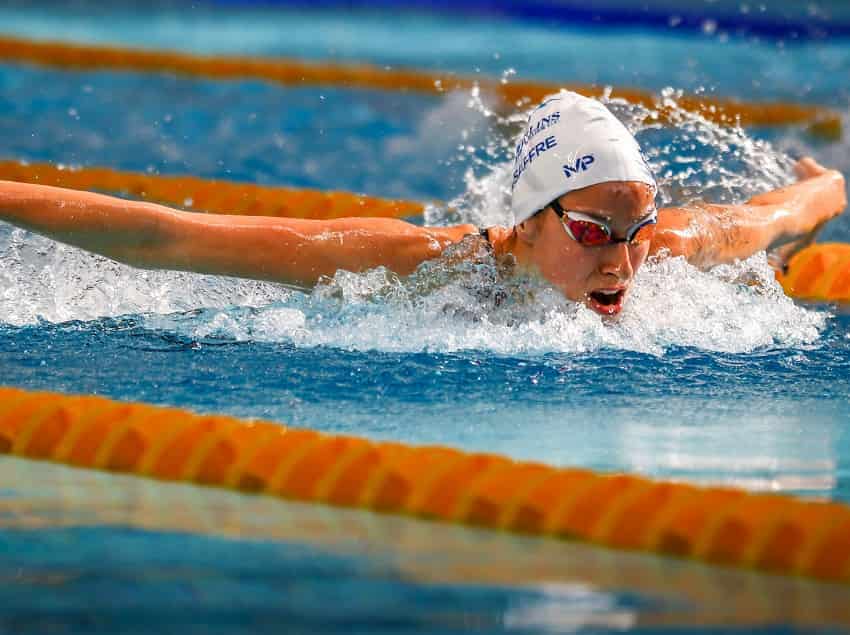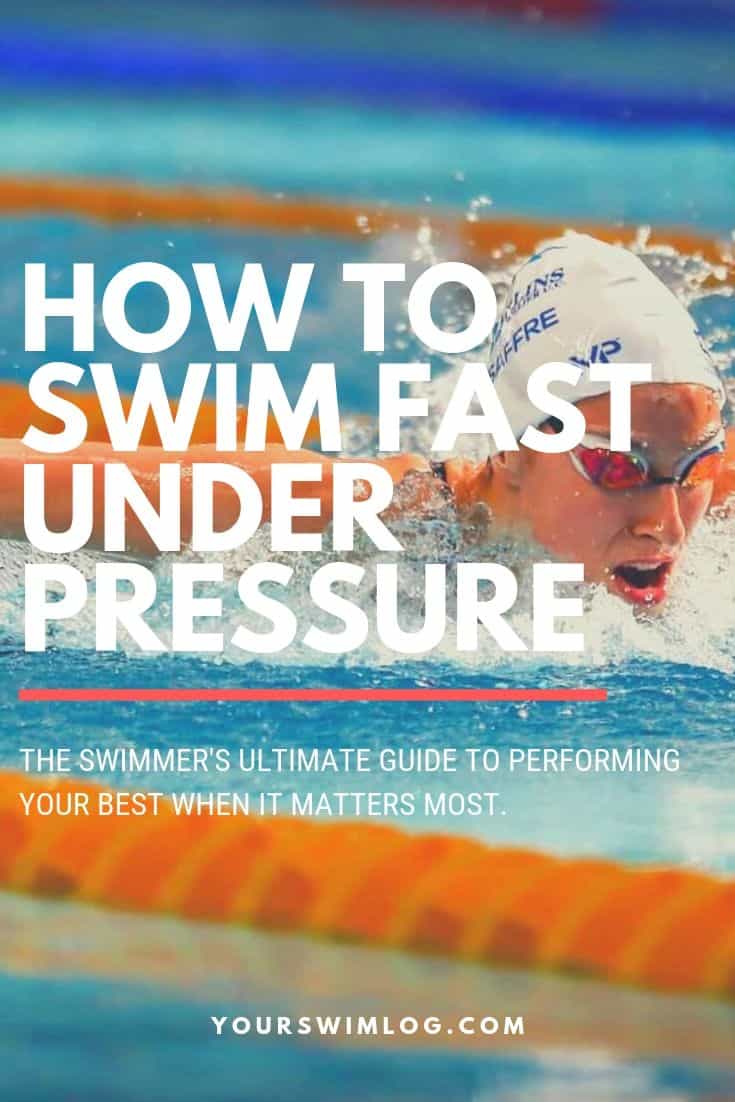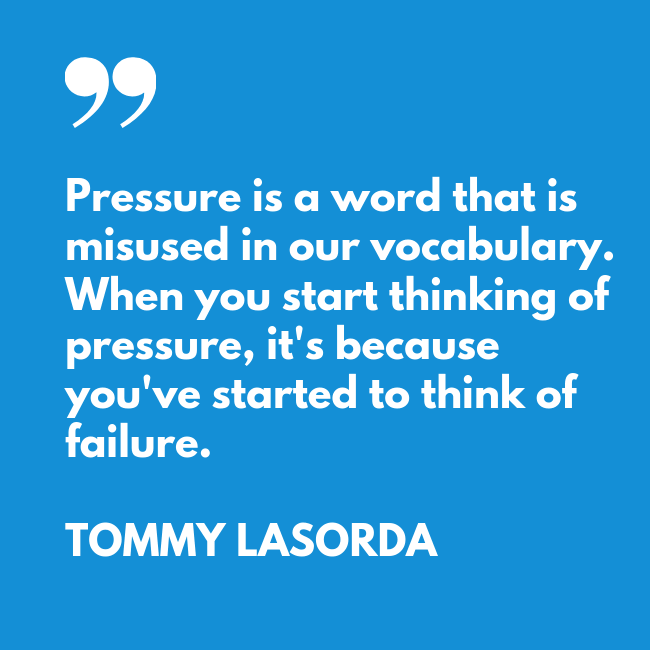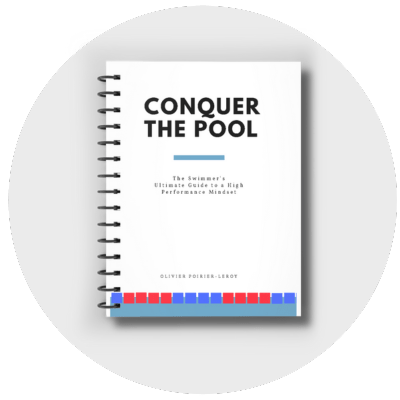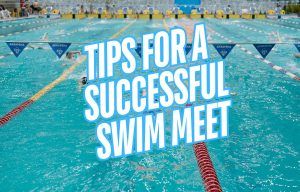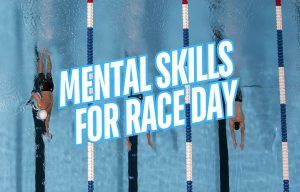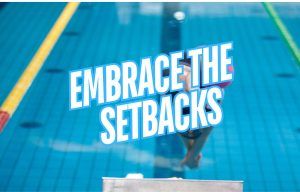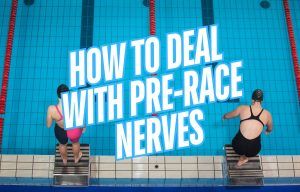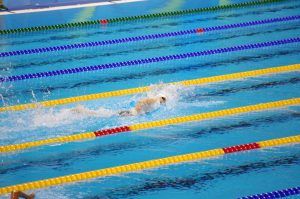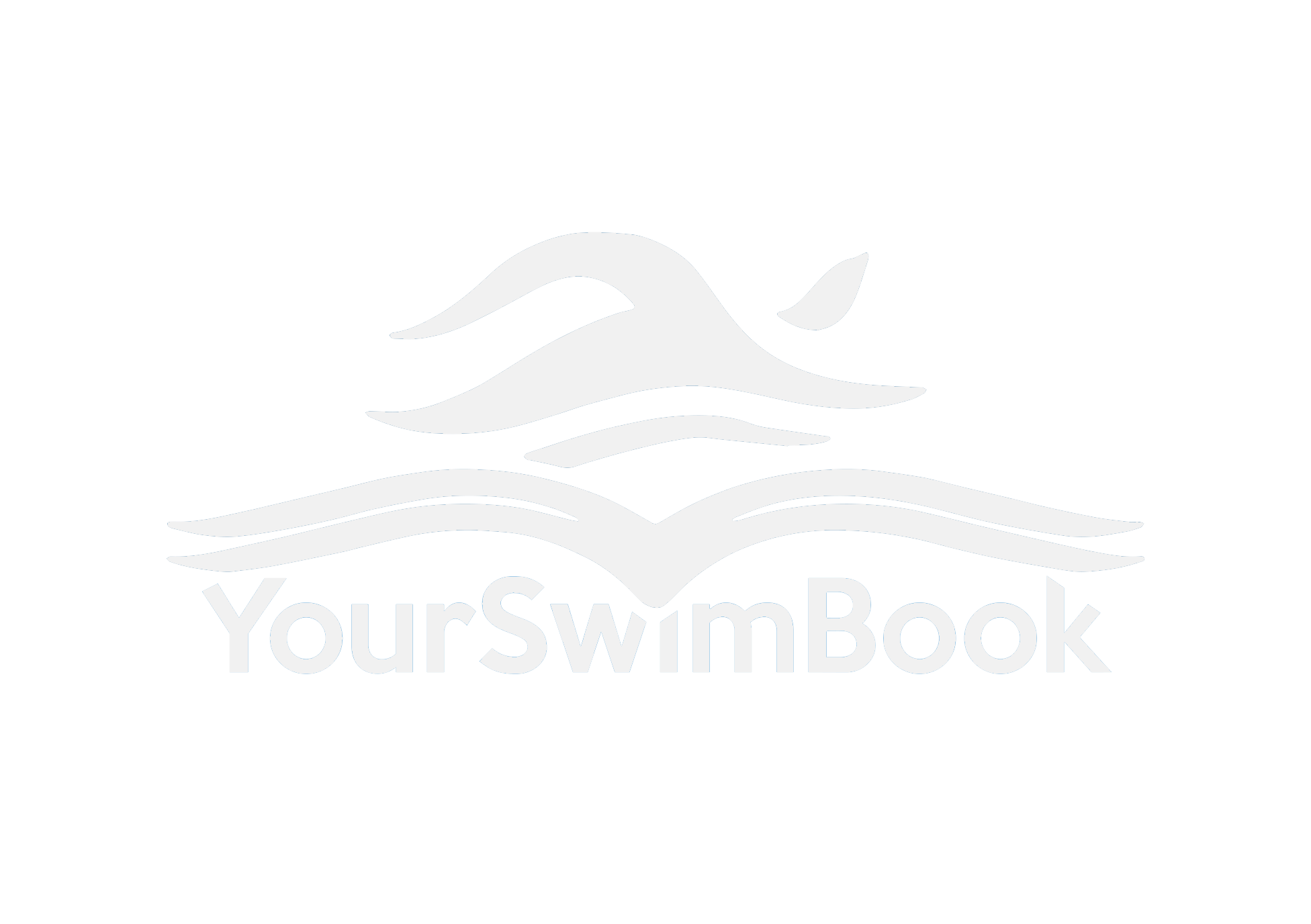Fed up with not being able to rise to the occasion when the pressure is on? Here’s the swimmer’s ultimate guide to performing at your best when it matters most.
Because you have big goals for yourself in the water, it’s only natural that you are going to experience pressure.
For swimmers who struggle with pressure, who don’t have a positive relationship with it, and use ineffective coping strategies, expectations and pressure takes their hard work and preparation and renders them useless on race day.
In this comprehensive guide to helping swimmers deal with pressure, I am going to show you some ways to bulletproof your mindset for moments of peak pressure.
We are gonna do that by:
- Experiencing the physical symptoms of competition more regularly so that it doesn’t overwhelm you on race day.
- Prepare self-talk that reframes pressure and pre-race anxiety as something that isn’t to be feared.
- Schedule regular visualization sessions to acclimatize yourself to being nervous (and overcoming the intensity of the moment).
- Use a mindset that keeps you from focusing on the things that makes pressure escalate during big moments at the pool.
The topic of pressure is a hard one, because for the swimmer who experiences pressure, it can be frustrating trying to get to the root of what is happening. When you train hard, have some natural talent, and have all the tools and training to perform at a high level, you expect to be able to swim fast when it matters most.
On top of the general confusion about the causes of excess pressure and how to manage it, faltering under the bright lights is also difficult to discuss.
You don’t feel particularly proud about the fact that you are unable to rise to the occasion, and so instead of getting the help you need to deal with it, you suffer in silence, hoping next time will be different.
If this sounds familiar, this guide will be of big-time help.
Pressure is a privilege
Let’s start off by clearing the chlorinated air about something important.
Pressure isn’t the problem.
Fear isn’t the problem either. Pressure, fear, and anxiety are a natural part of chasing excellence.
There’s no scenario where you are trying to improve and do big things in the water that is free of fear and pressure.
Pressure is a part of big moments.
It’s how you deal with pressure that dictates what happens next.
Swimmers will try to suppress the feelings of pressure by telling themselves not to feel pressure (doesn’t work), overthinking (doesn’t work either), or not using the right mental skills to cope with the intensity of the moment.
While you can’t completely rid yourself of the pressure you feel in big moments, you can change the way you approach and deal with it.
Arming yourself with mental skills to deal with pressure
When swimmers reach out to me to talk about their frustrations with performing under pressure, they are surprised to hear how functional and nuts-and-bolts the solutions are.
Being able to perform under pressure means having the right mental skills.
Just like having great technique and fast starts are something you develop over time with the right combination of training and skills, being able to cope and thrive in moments of great pressure comes from using effective and proven tools and skills.
With time, repetition, and progression, you too can swim like a monster in crunch time.
Let’s get started.
1. Focus on your process.
Let’s take an imaginary look at your next big race.
You’ve worked really hard in practice, your taper went well, and the forecast calls for some personal best time smashing.
Giddyup, right?
On race day, your competition puts up some really fast times. It’s going to be a battle to get your hand on the wall first. It’s your best event, a couple college recruiters are in the stands, your coach and team are relying on you to put up points, and it’s your best event. You’ve worked hard all year for this moment. This one chance to show what you are capable of.
The pressure per square inch between your ears is off the charts.
At this point, your thoughts can go in two different directions.
A results-focused mindset which has you thinking mainly about the result and its possible implications. You go back to past performances, wonder how your coach will react to a bad swim, or focus on what other swimmers are doing. Things that will only make you feel more pressure.
A process-based focus means you are keyed in on the things that will help you swim your best. One step at a time, you nail the basics of your process: The pre-race routine. Performance cues. Race strategy. You are focused on being present and doing what it takes to execute your race at an optimal level.
Instead of worrying about the outcome, or things that they don’t control, elite swimmers spend their thoughts and focus on their process.
In the weeks leading up to those pressure-packed moments, outline and review what your race day process is going to look like.
Your personal process will give you something familiar and performance-inducing that you can rely on when the pressure is cranked to eleven.
2. Check your mental approach—challenge or threat?
Excess pressure is the byproduct of a threat mindset.
Here’s what a threat mindset sounds like: If I don’t go a best time, I will have failed myself and my team. If I don’t win this race, I will feel like a failure.
A threat mindset is reactive and fertile ground for choking. Instead of focusing on your process, you are focused on what could go wrong.
Next stop: Pressure McPressuretown.
A challenge mindset, on the other hand, views the moment as an opportunity. A…wait for it…challenge. When we view things as a challenge, we aren’t fixated on the bad stuff that might happen. We relish the moment as a chance to prove ourselves. We don’t tense up and are more likely to get into the zone.
This change in mindset seems simple, borderline meaningless, but it’s wildly powerful.
And knowing the difference means we can design some self-talk that matches the mindset we want on race day.
3. Use self-talk to direct your response to pressure.
The self-talk you use holds a remarkable amount of sway in how you perform under pressure.
If your self-talk revolves around trying to subdue the pressure, fearing a bad outcome, or overthinking how the competition is performing, then it’s not hard to guess how you are going to swim.
(Not great, usually.)
Design your self-talk (and self-affirmations) around dealing positively with the pressure of the moment:
- I’m nervous, but I’m also excited. I get to do the sport that I love.
- Pressure is a normal part of racing. It’s not a bad thing!
- Racing is exciting—feeling nervous is part of the process!
- Pre-race nerves help me swim my best.
Use your individualized self-talk regularly, in the pages of your log book, in affirmations that you read to yourself each morning, and in other hard-to-miss places.
The more you say and read them, the more authentic and legitimate they will become.
4. Visualize your emotional and mental response to pressure.
Visualization is super neat-o, and something a lot of swimmers, including some of your favorite Olympians, use to sharpen their preparation.
It’s a proven way to boost performance in practice, increase self-confidence, and prepare you for moments of peak pressure.
In the months and weeks leading up to competition, spend a few minutes each day visualizing your ideal race. How you feel in the water. The quiet before the starter’s gun. And of course, the physical symptoms of pressure.
Visualize the nerves, the knots in your stomach, the thumping in your chest. Picture yourself standing on the cold pool deck, swinging your arms, and confidently feeling the pressure.
Visualization is so powerful because it does a great job of simulating an experience, so that when that experience happens for real, you will have the sense of “been there, done that.”
As you do this little exercise, you might be surprised to find that imagining the pre-race nerves will make you feel those same physical symptoms. Sitting there in the quiet of your room, your heart will beat a little harder, your stomach will churn, and your palms will even get clammy.
This means you are doing it right!
Use visualization as a way to give yourself a series of reps before the big race so that you can develop the confidence to handle pressure when the real thing happens.
5. Turn up the pressure in practice.
When you compare the amount of time you spend training to competing, it’s no contest.
I’m no space scientist, but it’s like 100 to 1. Probably higher.
This kind of disparity explains why the pressure of competition can totally blindside us—the infrequency of real pressure means we aren’t ready for it when it happens.
But if you chase moments of pressure more regularly, the novelty wears off, and your confidence can flourish.
Use practice as training for pressure:
- Race and compete as much as you can.
- Get uncomfortable with intervals.
- Test sets.
- Chase practice best times.
- Do one more rep.
- Get off the blocks more often.
- Train the way you want to race.
The goal of practice is to make things so hard that things on race day are straight-forward and “easy.”
You aren’t practicing for the sake of practicing, you are practicing a result.
When you consistently train comfortable, safe and fail-free, you are going to be in a world of trouble when adversity and pressure strike on race day.
Pressure is your friend (until it isn’t)
Pressure-filled situations are typically uncomfortable. So we avoid them. Or we back off on our effort to avoid risking disappointment. Both to our own detriment.
But if you are experiencing a sense of pressure, it means there is a chance for improvement on the line.
A set that you’ve never done before, doing workouts with a faster group, a harder interval, a test set, and of course, getting up on the blocks to see how fast you can do shaved and tapered.
This week at practice start using some of the tools listed above and start putting in the reps.
Develop yourself into the kind of swimmer who swims like a boss when the pressure is on.
More Stuff Like This:
The Swimmer’s Guide to Performance Anxiety and Pre-Race Butterflies. The stress and anxiety of competition is universal. Here’s how to navigate the sometimes confusing mindsets and emotions that happen before swimmers race.
This Mental Training Workbook Will Help You Swim Like a Rock Star This Season. Confused about mental training? Want to unleash pro mode on your swimming this year? Learn how this mental training workbook will change your mindset and help you pummel your PB’s this season.

